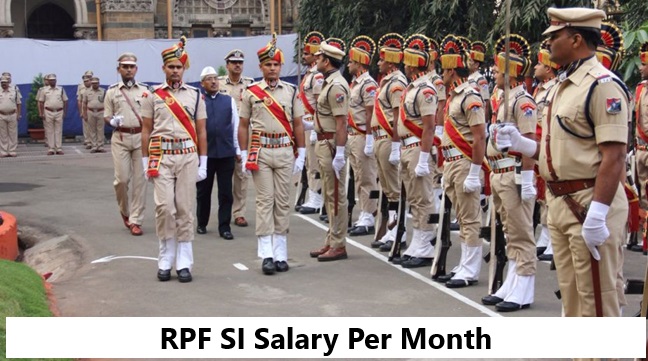Introduction
A railway clerk plays an essential role in the operations of India’s railway system. As a clerical staff member, the railway clerk is responsible for a variety of administrative duties, ensuring that the system runs smoothly. In this article, we will provide a detailed look at the railway clerk salary, including salary structure, allowances, career growth, and other important aspects related to the role.
What Does a Railway Clerk Do?
Before diving into the salary, it’s important to understand the duties of a railway clerk. The role may vary slightly based on the department and the specific responsibilities assigned. However, the general tasks of a railway clerk include:
- Ticketing: Handling reservations, cancellations, and ticket inquiries.
- Clerical Work: Managing records, reports, and other administrative tasks.
- Customer Service: Assisting passengers with general inquiries.
- Financial Transactions: Collecting payments and issuing receipts.
- Data Management: Maintaining files and performing basic office work.
A railway clerk must have excellent organizational skills and a good understanding of the railway system. It is a highly respected job that offers stability and opportunities for growth.
Railway Clerk Salary Breakdown
The railway clerk salary varies depending on factors like experience, location, and the specific level of the position. The salary is determined according to the 7th Pay Commission pay matrix, which is implemented across Indian Railways. Here’s an overview:
- Basic Pay:
The railway clerk salary begins with a basic pay of ₹19,900 per month for entry-level clerks. This is part of Level 2 of the pay matrix. - Grade Pay:
Along with the basic pay, the railway clerk also receives grade pay. The grade pay for a clerk is typically ₹1,900 to ₹2,000, depending on the position and department. - Total Salary:
Combining the basic pay and grade pay, the railway clerk salary per month generally ranges from ₹25,000 to ₹30,000. The final salary may vary depending on the posting and allowances.
Allowances and Benefits
In addition to the basic salary, railway clerks are entitled to various allowances and benefits:
- House Rent Allowance (HRA):
Railway clerks receive HRA as a percentage of their basic salary, which can range from 8% to 24%, depending on the city of posting. - Dearness Allowance (DA):
The DA is revised twice a year to adjust for inflation. It can range from 10% to 30% of the basic salary. - Travel Allowance (TA):
Railway clerks receive TA for official travel, covering expenses for transportation, accommodation, and food during their travel. - Medical Allowance:
Railway employees have access to comprehensive medical facilities for themselves and their families. - Other Allowances:
Additional allowances may include risk allowance, special duty allowance, and performance-based bonuses.
Career Growth and Promotions
One of the advantages of working as a railway clerk is the opportunity for career advancement. With experience, clerks can be promoted to higher positions such as:
- Senior Clerk
- Head Clerk
- Assistant Station Master
- Section Officer
Promotions and salary increments are based on performance, seniority, and examinations. As employees rise through the ranks, their salaries increase, along with additional responsibilities.
Job Security and Perks
A railway clerk enjoys excellent job security, as Indian Railways is a government-run organization. Railway employees are not only assured of a stable career but also have access to various perks:
- Pension Scheme:
Clerks are eligible for a government pension after retirement, ensuring financial stability during their post-service years. - Provident Fund (PF):
A portion of the salary is contributed to the employee’s Provident Fund, which is a savings scheme that grows over time. - Insurance:
Railway employees are covered under health and life insurance schemes. - Leave Entitlement:
Railway clerks are entitled to a significant number of leaves per year, including casual leave, earned leave, and medical leave.
Railway Clerk Salary in Different Locations
The railway clerk salary can vary based on the location. Clerks posted in metro cities or Tier-1 cities receive higher allowances due to the increased cost of living. For instance:
- Metro Cities (Delhi, Mumbai):
Clerks posted in metro cities may earn slightly more in allowances like HRA, which compensates for the higher living costs. - Tier-II Cities:
Cities like Jaipur, Chandigarh, and Lucknow offer a balanced salary structure with moderate allowances. - Tier-III Cities:
The salary may be a bit lower in Tier-III cities, but the cost of living is also reduced, making it manageable.
Comparison with Other Government Jobs
When compared to other government positions, the railway clerk salary is competitive. While positions in IAS, IPS, or IES may offer higher pay scales, the stability and benefits that come with a railway clerk job make it an attractive option for many.
Conclusion
In conclusion, the railway clerk salary offers a competitive and stable income, with a basic pay of ₹25,000 to ₹30,000 per month. The role provides excellent benefits such as HRA, DA, medical allowance, and job security, along with ample opportunities for career advancement. Whether you are a fresh graduate or someone looking for a stable government job, becoming a railway clerk can be a rewarding choice.
Summary of Key Points:
- The railway clerk salary begins at ₹25,000 to ₹30,000 per month.
- The salary includes allowances such as HRA, DA, TA, and medical benefits.
- The role offers career growth opportunities, promotions, and additional benefits.
- Railway clerks enjoy excellent job security and post-retirement benefits.











Leave a Reply